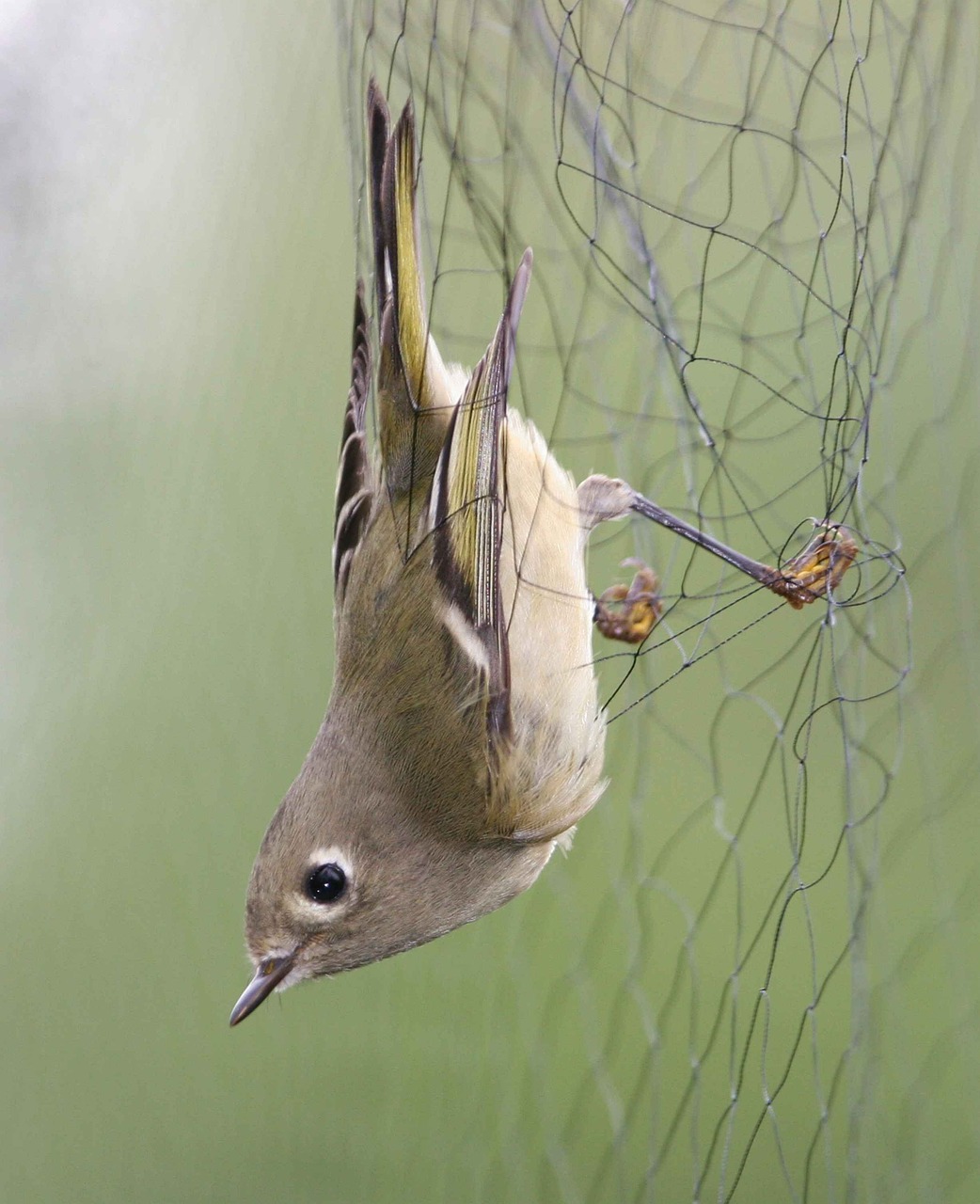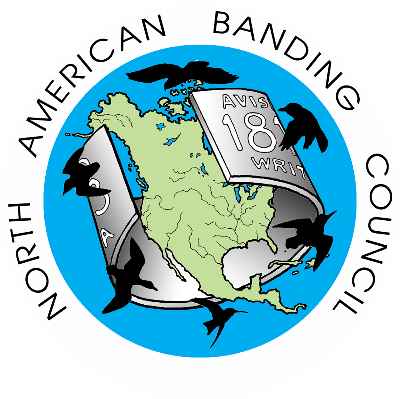Banding, oe a they say in Europe, ringing, is an important tool in ornithology. In the middle ages birds were marked with leg bands, probably for ownership identification. John James Audubon banded some birds, but it wasn’t until the late 19th century in Europe where the practice of “ringing” took hold. By the early 1900’s banding was popular in the U.S. and gave rise to the American Birding Association. Later the responsibility for coordinating, standardizing, and data collection went to the federal government’s USGS Bird Banding Laboratory. All banders must be provided permits by the BBL in order to capture and band birds. In the UK go here for Ringing information. Also see Wikipedia and the Journal of Field Ornithology
Smaller birds are often caught in “mist nets”; like large hair nets , they are placed in areas where birds are likely to fly. The birds do not see the nets and fly into them. If done properly and checked often, injuries or death to the birds are rare. Bird nets can only be purchased and used by approved bird banders and researchers.
What do we learn from banding?
Banding allows the determination of the minimum length of time that an individual bird lives. Without an individual marker, there would be no way to determine if the Cardinal that is outside my window is the same bird that I saw last year or not. With a bird band, if I catch that Cardinal today and band it, I will know if that one bird is caught again in the future.
We have learned, for example, that it is not uncommon for individuals of some species to live 10 to 20 years or more in the wild. Small songbirds that we may think of as short-lived may live a surprising length of time. We have a record of a hummingbird living as long as 12 years! However, the average life span of the majority of the individuals is much shorter.
Information on dispersal and migration, social structure and behavior, longevity, population trends, survival and productivity, toxicology and disease information, changes in territories and home ranges, and is especially important in determining the legal harvest of game birds.
The value of banding data is only fully realized when banded birds are recovered and band numbers reported to the Bird Banding Laboratory. Some recoveries are recaptures (including resighting of bands through spotting scopes) of live birds that are obtained from banders or other wildlife professionals. However, the predominant number of recoveries of dead birds come from the public, eit
 her by people who have found birds that have died, or by hunters who have harvested them. More information about how and where to report the recovery of banded birds can be found on the USFWS reporting bands page.
her by people who have found birds that have died, or by hunters who have harvested them. More information about how and where to report the recovery of banded birds can be found on the USFWS reporting bands page.
North American Bird Banding Manual Volume 1
Report Recovery of a Bird with a Metal Leg Band 1-800-327-BAND
Or Submit Electronically.
 North American Banding Council
North American Banding Council
The North American Banding Council (NABC), incorporated in 1998, is a nonprofit group encompassing bird research organizations whose members use bird banding as a tool in ornithological research, conservation, and management. The mission of the NABC is to promote sound and ethical bird-banding practices and techniques. To accomplish this, the NABC has developed educational and training materials, including manuals on general banding techniques as well as techniques manuals for specialized taxonomic groups accompanied by a three-level certification process (Assistant, Bander, and Trainer).
Pingback: Quantitative Ornithology – Ornithology